How ABA Therapy Helps Children Develop Stronger Memory Skills
Unlocking Memory Potential Through ABA Therapy
Introduction
Applied Behavior Analysis (ABA) Therapy is renowned for its effectiveness in fostering developmental skills among children, especially those on the autism spectrum. Among the various capabilities it enhances, memory development stands out as a critical component that supports comprehensive cognitive growth. This article delves into how ABA therapy aids memory enhancement, the techniques employed, and the broader benefits it offers.
The Science Behind ABA Therapy's Impact on Memory
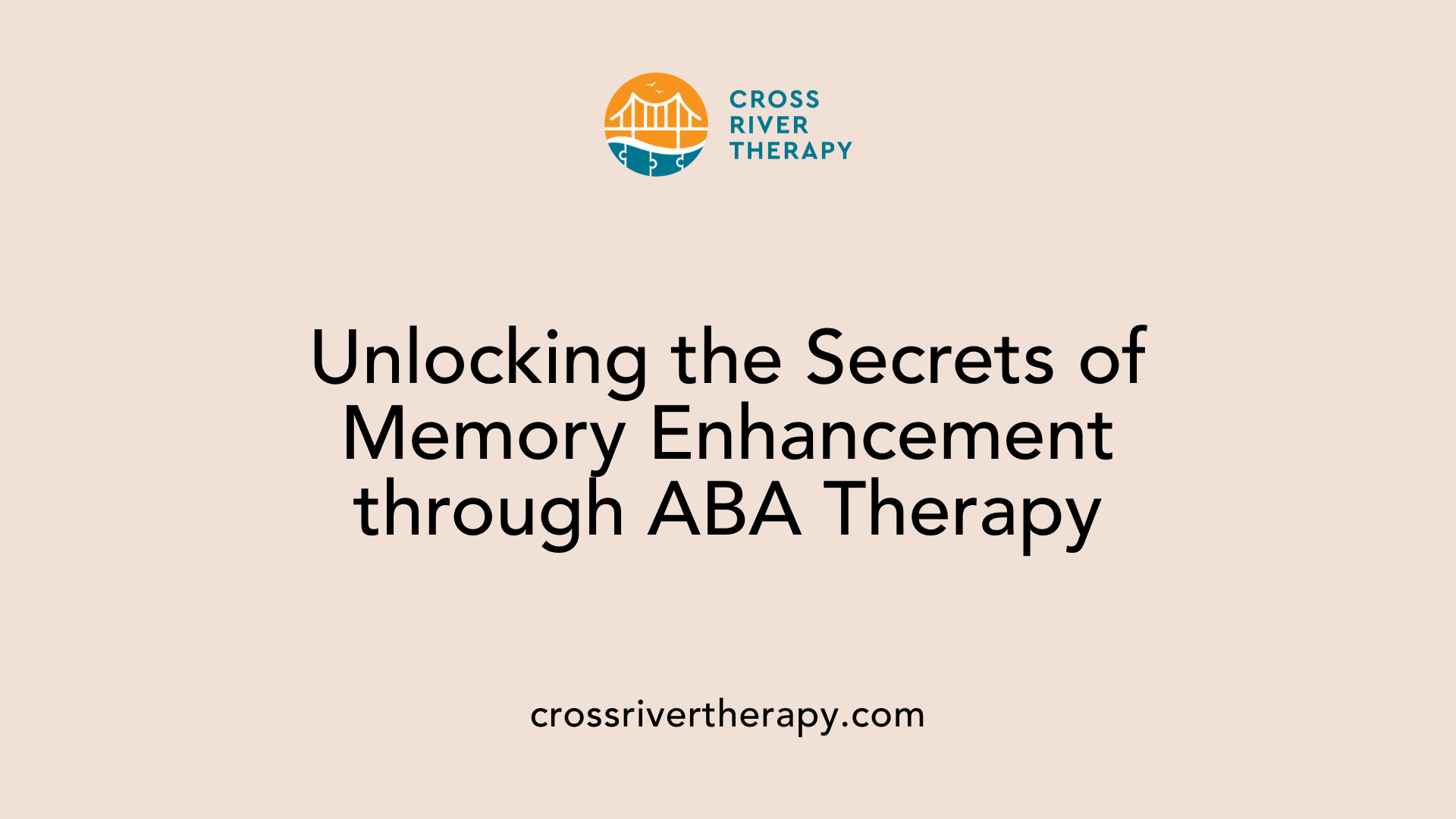
How does ABA therapy enhance memory development in children with autism?
ABA therapy enhances memory development in children with autism by using strategies that cater to their visual learning preferences. The therapy often integrates visual aids and structured routines which help in breaking down complex tasks into smaller, digestible steps. This progressive approach makes it easier for children to transition information from short-term to long-term memory through consistent repetition.
Here are some specific strategies used in ABA therapy to boost memory skills:
- Visual Schedules: Provide a clear outline of tasks, allowing children to anticipate what comes next and improving task completion rates.
- Breakdown of Instructions: Instead of overwhelming children with multi-step directions, therapists simplify these instructions into manageable parts.
- Memory Games: Incorporating fun activities that promote recall and retention strengthens memory pathways.
Additionally, reducing distractions in the learning environment helps children focus better on the tasks at hand, further aiding memory retention. Establishing consistent daily routines, such as using checklists, can develop procedural memory, thereby enhancing recall over time.
Children with autism often face specific memory challenges, such as difficulties in language processing and following multi-step directions. These deficits can significantly impact their overall learning experience. By targeting these areas through dedicated ABA interventions, children not only improve their memory skills but also their ability to understand and process information in real-life scenarios.
Structured programs in ABA highlight the importance of early intervention, leveraging the brain's plasticity during formative years. This allows children to build resilience in executive functioning skills, including working memory. Enhanced memory capabilities foster academic learning and contribute to better daily life skills, ultimately promoting more independence for children with autism.
Core Principles of ABA and Their Influence on Memory
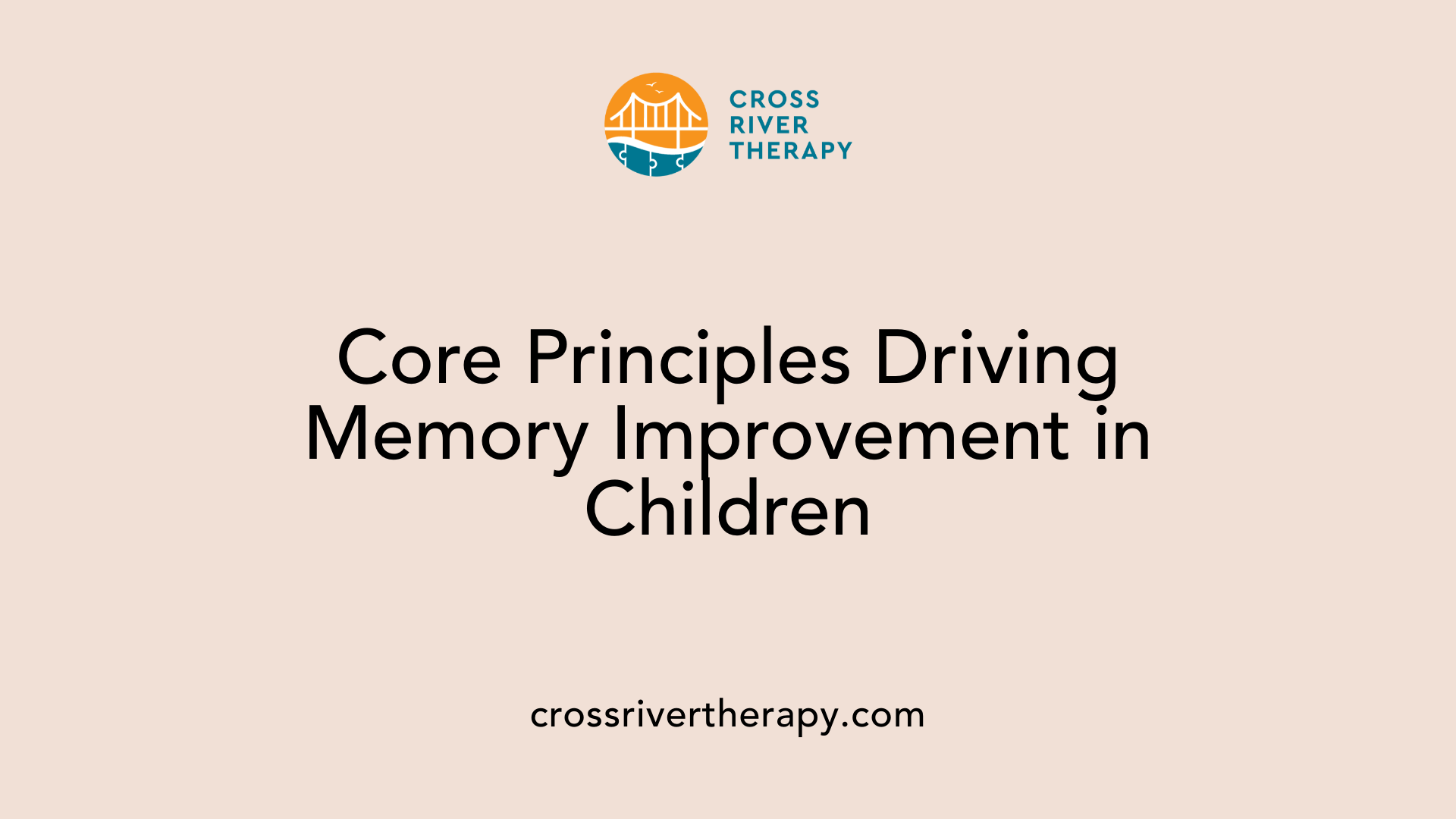
What are some key ABA principles and techniques that support cognitive and memory development?
Applied Behavior Analysis (ABA) therapy is built on core principles that significantly enhance cognitive development and memory skills in children, particularly those with autism or developmental delays. One fundamental principle is positive reinforcement, which aligns well with the process of memory retention by encouraging children to engage in desired behaviors through rewards. This method effectively reinforces learning, making information more memorable.
Another essential technique is task analysis. This involves breaking complex skills into smaller, manageable components. For example, when teaching a child how to complete a homework assignment, the therapist may break it down into specific steps, facilitating better understanding and recall of instructions. This structured approach not only aids memory development but also boosts the child’s confidence as they gain mastery of each step.
Visual modeling and video modeling leverage children’s strengths in visual-spatial memory. These techniques demonstrate appropriate behaviors and skills through observation, which is particularly effective for enhancing memory in children with autism. Visual aids provide contextual cues that can help solidify the retention of information.
Additionally, strategies like prompting and fading help guide children in initiating tasks, gradually promoting independence in recalling information. Over time, as the child’s confidence grows, fewer prompts are used, which supports the development of self-sufficient memory skills.
Natural environment teaching and generalization strategies extend learned skills to real-life settings, further enhancing cognitive flexibility. This practical application is crucial for ensuring that memory skills can be effectively used in day-to-day situations, ultimately contributing to better academic performance and social interactions.
Techniques in ABA for memory skills
Several specific techniques employed in ABA therapy are tailored for developing memory skills:
- Visual Schedules: These aid children in remembering sequential tasks by providing a clear visual representation of steps.
- Memory Games: Engaging activities designed to bolster recall and retention in a fun manner facilitate learning through repetition.
- Storytelling: Using narratives not only makes learning enjoyable but also enhances memory retention through context and engagement.
- Documentation through Pictures: Capturing experiences visually supports memory by anchoring memories to corresponding images.
The consistent use of these techniques within ABA therapy builds a robust framework for improving both short-term and long-term memory capabilities, which are crucial for academic success and effective communication in children.
Strategies in ABA Therapy for Strengthening Working Memory
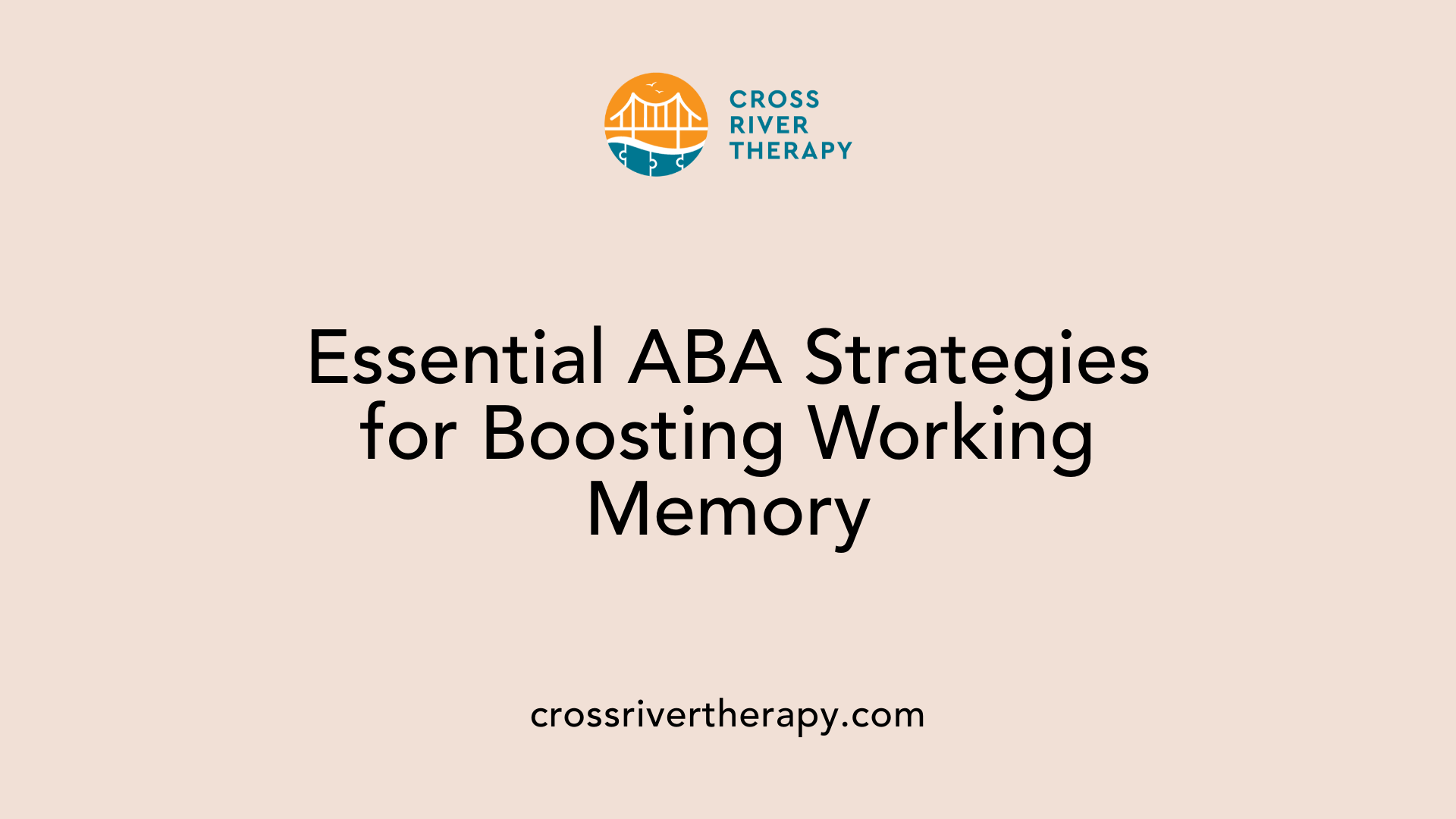
ABA Strategies for Working Memory
Applied Behavior Analysis (ABA) therapy is particularly effective in enhancing working memory among children. This is achieved through various structured strategies that focus on individual learning needs. By utilizing positive reinforcement, therapists encourage behaviors that foster memory retention and comprehension.
Visual Schedules and Memory Games in ABA
One significant method involves the use of visual schedules. These schedules help children visualize their daily tasks, reducing anxiety and facilitating better memory recall. Memory games play an essential role as well; they make learning enjoyable while directly targeting memory skill development.
Breakdown of Instructions and Skill Development
ABA therapy also breaks down complex tasks into manageable steps, making it easier for children to absorb information. By simplifying multi-step instructions, children can focus on one part at a time, enhancing their ability to recall details effectively. This structured approach promotes not only task completion but also long-term retention of learned material.
| Strategy | Description | Benefits |
|---|---|---|
| Visual Schedules | Helps organize tasks visually | Reduces anxiety, enhances recall |
| Memory Games | Engaging activities that reinforce memory skills | Makes learning enjoyable while improving retention |
| Breakdown of Instructions | Simplifies complex tasks into smaller parts | Promotes better understanding, enhances memory retention |
ABA therapy utilizes these targeted strategies to effectively bolster memory skills, crucial for academic success and daily life functioning.
Harnessing Brain Plasticity through Early Intervention
Importance of Early ABA Intervention
Early intervention through ABA therapy is critical for supporting children, especially those with autism or developmental delays. When implemented at a young age, ABA can maximize the brain's plasticity, facilitating developmental skills such as memory retention and organization. Timely engagement in structured programs helps children establish strong foundations for their cognitive and academic growth.
Brain Plasticity and Memory Development
The concept of brain plasticity indicates that the brain can adapt and reorganize itself throughout an individual's life. In children, this flexibility is especially pronounced, allowing them to make significant strides in skills like memory and problem-solving when tailored interventions are applied early. By leveraging the plasticity of the developing brain, ABA therapy strategies encourage optimal memory skills through positive reinforcement and structured learning methodologies.
To breakdown the connection between early ABA intervention and memory development, consider the following table that outlines the key benefits:
| ABA Technique | Memory Skill Targeted | Expected Outcome |
|---|---|---|
| Positive Reinforcement | Memory Retention | Improved recall of learned instructions |
| Structured Assessments | Working Memory | Enhanced task management abilities |
| Visual Aids | Procedural Memory | Better understanding of tasks |
| Breaking Down Tasks | Comprehension and Execution | Increased ability to follow directions |
Through these techniques, ABA therapy not only cultivates memory skills but also enhances overall learning capabilities, ultimately leading to improved academic performances and daily living skills.
The Role of Positive Reinforcement in Memory Enhancement
How rewards aid memory retention
Positive reinforcement plays a significant role in enhancing memory retention in children undergoing ABA therapy. When desirable behaviors are rewarded, children become more motivated to repeat those behaviors. This motivation leads to improved recall and understanding of tasks, as the connection between the behavior and the reward solidifies memory pathways.
For instance, if a child successfully remembers to follow a multi-step instruction and receives praise or a small reward, they are more likely to recall and perform similar tasks in the future. This cycle of behavior and reward not only aids immediate memory but also contributes to long-term retention and learning.
Positive reinforcement as a core ABA strategy
In ABA therapy, positive reinforcement is not just an add-on; it's a foundational strategy. This approach structures learning to harness the child's engagement effectively. By continually reinforcing successful memory-based interactions, therapists help children build their working memory skills over time.
The integration of rewards can be particularly beneficial for children with autism, who may struggle with traditional learning methods. Tailored reinforcement strategies can make all the difference in motivating these children to engage in memory-enhancing activities, leading to significant gains in their academic and social performance.
Overall, utilizing positive reinforcement in ABA therapy empowers children to develop better memory skills, substantiating its crucial role in cognitive development.
Enhancing Executive Function Skills through ABA
Executive functioning and memory
ABA Therapy effectively enhances various components of executive functioning, including working memory, self-control, and emotional regulation. These skills are vital for children as they navigate both daily activities and academic challenges. By focusing on tailored interventions, ABA helps target specific memory needs, thus improving overall cognitive function, especially in children with autism.
Children with deficits in working memory often struggle with tasks that require recalling information, such as following multi-step instructions or understanding lessons. ABA techniques, such as breaking down complex tasks and using repetition alongside visual aids, can significantly bolster working memory, making it easier for children to absorb and retain crucial information.
Impact on daily tasks and academic success
ABA Therapy's positive reinforcement methods encourage behaviors that facilitate learning, which can result in improved memory and organization skills. For instance, teaching children to use visual schedules helps them grasp task durations, ultimately fostering better time management and memory retention.
Moreover, strong working memory enhances a child’s ability to manage various aspects of their life, from academic tasks to social interactions. Research indicates that better executive functioning is linked to higher academic performance and improved daily life skills.
In summary, ABA Therapy plays a key role in developing executive function skills and essential memory capabilities, leading to significant advancements in both academic achievement and practical daily functioning.
Real-Life Applications of Improved Memory in Children
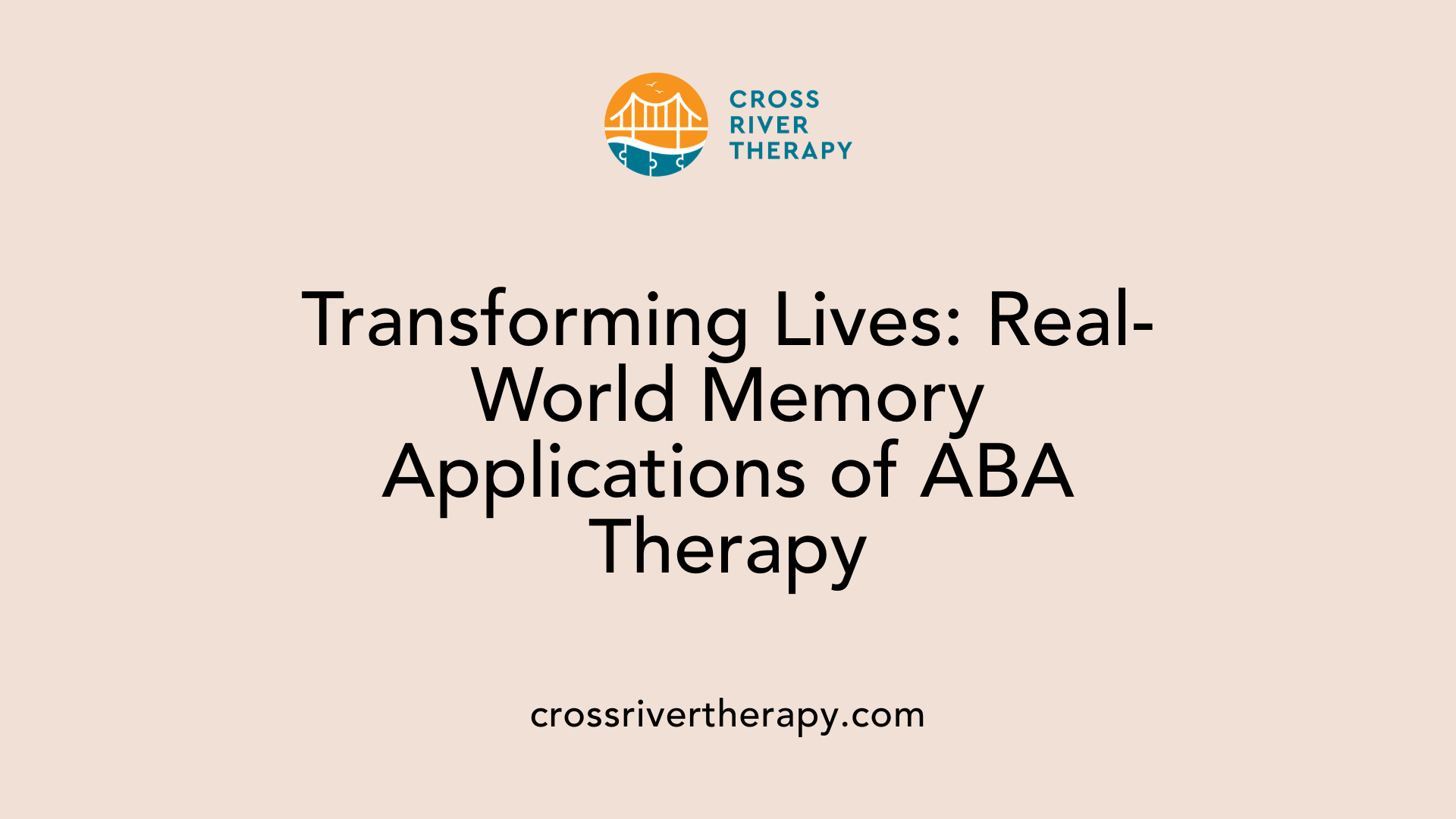
Impact of Enhanced Memory on Daily Life
Enhanced memory skills significantly improve children’s daily lives, particularly for those with autism. A strong memory supports various aspects of functioning, from academic performance to social interactions. For instance, when a child can recall instructions accurately, they can follow daily routines without adult prompts, fostering independence.
Moreover, improved memory impacts problem-solving abilities. Children who remember past experiences and instructions can apply learned knowledge to new situations. This adaptive thinking is essential not only in academic settings but also in navigating everyday challenges. Consequently, children who benefit from ABA therapy develop greater confidence as they become more capable of managing their environment and social interactions.
ABA Therapy's Long-Term Benefits
The benefits of ABA therapy extend well beyond immediate memory improvements. ABA therapy is designed to support children in developing various life skills, including social communication, emotional regulation, and self-control, which are crucial for their overall growth. By employing positive reinforcement, ABA therapists encourage desirable behaviors, which further aids memory retention.
Moreover, incorporating structured, personalized intervention plans creates a foundation for sustained success. Research shows that children who engage in ABA therapies often experience lasting improvements in cognitive skills, equipping them for future academic and professional pursuits.
Given the individualized nature of ABA, each therapy session can adapt to a child's unique needs, leading to effective and measurable outcomes over time. The use of techniques like visual aids, memory games, and repetition not only enhances memory skills but also strengthens overall cognitive development. Therefore, ABA therapy is pivotal in ensuring that children not only improve their memory but also gain vital skills that benefit them throughout their lives.
| Benefits of ABA Therapy | Memory Development | Additional Skills Enhanced |
|---|---|---|
| Improved short-term and long-term memory | Enhanced recall of instructions | Language and communication |
| Supports academic learning | Better task organization | Social interaction skills |
| Fosters independence | Strengthened problem-solving abilities | Emotional regulation and self-control |
Utilizing Visual Aids for Memory Development in ABA
Visual modeling and procedural memory
Visual aids play a significant role in enhancing procedural memory for children undergoing ABA therapy. Utilizing visual tools, such as diagrams, charts, and pictures, can strengthen a child’s ability to remember and execute tasks. For children with autism, who often excel in visual-spatial working memory, these aids can effectively bridge the gap in comprehension and recall.
Efficacy of visuals in ABA strategies
The incorporation of visual cues into ABA therapy has shown to reduce stress and anxiety, especially during transitions. By employing storytelling, memory games, and visual schedules, therapists can create a more structured learning environment. Repetition through these visual aids helps solidify concepts and supports the transition of information from short-term to long-term memory.
This method not only aids in improving memory skills but also enhances overall cognitive development, allowing children to manage daily tasks and interactions more effectively. Through tailored strategies that utilize visual supports, children can achieve better retention and recall of information, fostering independence in learning both academically and socially.
Real-World Success Stories from ABA Therapy
Case Studies of Memory Improvement
ABA therapy offers compelling case studies that showcase significant memory improvement in children. For example, a young boy with autism struggled to follow multi-step instructions in his classroom. After several months of using ABA techniques such as visual schedules and memory games, he demonstrated marked improvement. Teachers noted that he could recall class instructions better and actively participate in lessons, significantly enhancing his academic performance.
Real-World Impacts of ABA Strategies
In another instance, a girl faced challenges in remembering environmental details and following directions. Through structured ABA interventions focused on breaking down tasks and employing visual aids, she showed a considerable enhancement in her working memory. Not only did this improve her ability to learn new concepts, but it also fostered her confidence and independence in social settings.
These real-world examples illustrate how ABA therapy effectively harnesses targeted interventions to bolster memory skills, helping children excel in both academic and daily life contexts.
Future Directions in ABA Therapy for Memory Enhancement
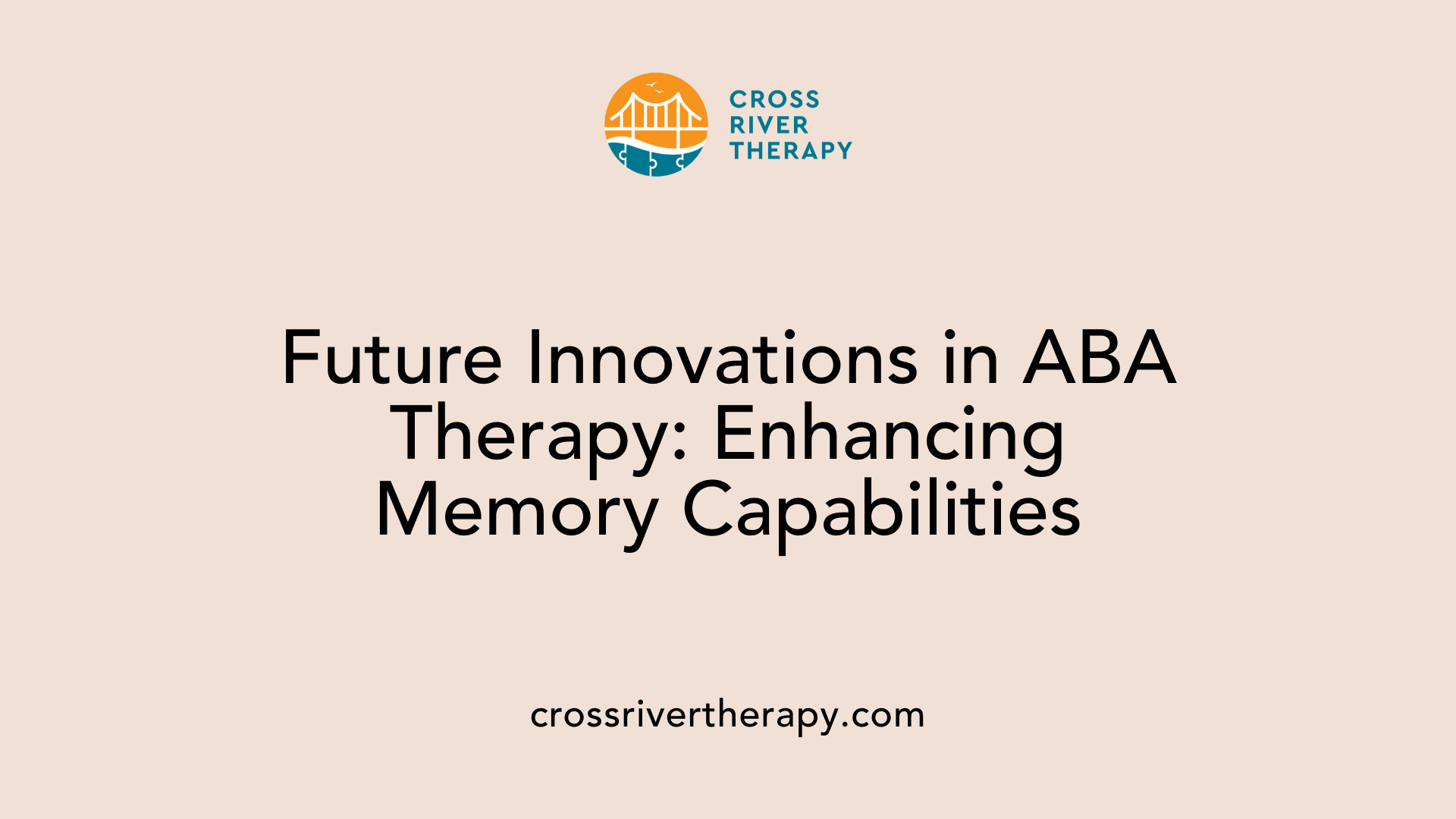
Emerging ABA Techniques
With advancements in behavioral therapy, new techniques are being incorporated into ABA therapy to enhance memory retention in children, especially those with autism. One emerging strategy is technology integration, where apps and digital tools are utilized to create engaging memory exercises. These tools can gamify learning, making memory practices fun and interactive.
Another innovative technique involves mindfulness approaches that help improve focus and reduce anxiety during learning activities. By teaching children to concentrate better and manage stress levels, these techniques can foster a more conducive learning environment.
Future Research and Expectations
Looking ahead, researchers anticipate a deeper investigation into the neurobiological impacts of ABA therapy on memory enhancement. This could involve studying brain changes associated with memory improvement due to therapy intervention.
Moreover, there is a growing interest in understanding the effects of group-based ABA therapy, which may not only enhance memory but also social skills. As studies progress, expectations revolve around creating more personalized ABA programs that adapt to each child’s unique learning profile, optimally targeting memory deficits.
Table 1 summarizes the potential future directions in ABA therapy for memory enhancement:
| Technique/Area of Study | Description | Expected Outcome |
|---|---|---|
| Technology Integration | Using apps for interactive memory exercises | Improved engagement and retention |
| Mindfulness Strategies | Techniques to enhance focus and reduce learning anxiety | Enhanced memory and learning environment |
| Neurobiological Research | Study brain changes related to ABA interventions | Insights into memory enhancement mechanisms |
| Group-Based Therapy | Collaborative approaches for skill development | Improved memory and social skills |
Conclusion
ABA therapy serves as a transformative tool in developing stronger memory skills among children, particularly those on the autism spectrum. By leveraging structured methodologies and reinforcing positive behaviors, ABA not only enhances memory retention but also promotes broader cognitive and social skills. As research advances and techniques refine, the potential of ABA therapy continues to grow, offering hope and tangible benefits for more children facing memory development challenges.
References
- Applied Behavior Analysis (ABA) | Autism Speaks
- ABA Therapy and Executive Functioning: Building Skills for Success
- Working Memory and Autism - LeafWing Center
- How ABA Therapy Supports Child Development
- How Schools are Improving Children's Working Memory and ...
- Applied Behavior Analysis (ABA) | Autism Speaks
- Applied Behavioral Analysis (ABA) - Autism Speaks



